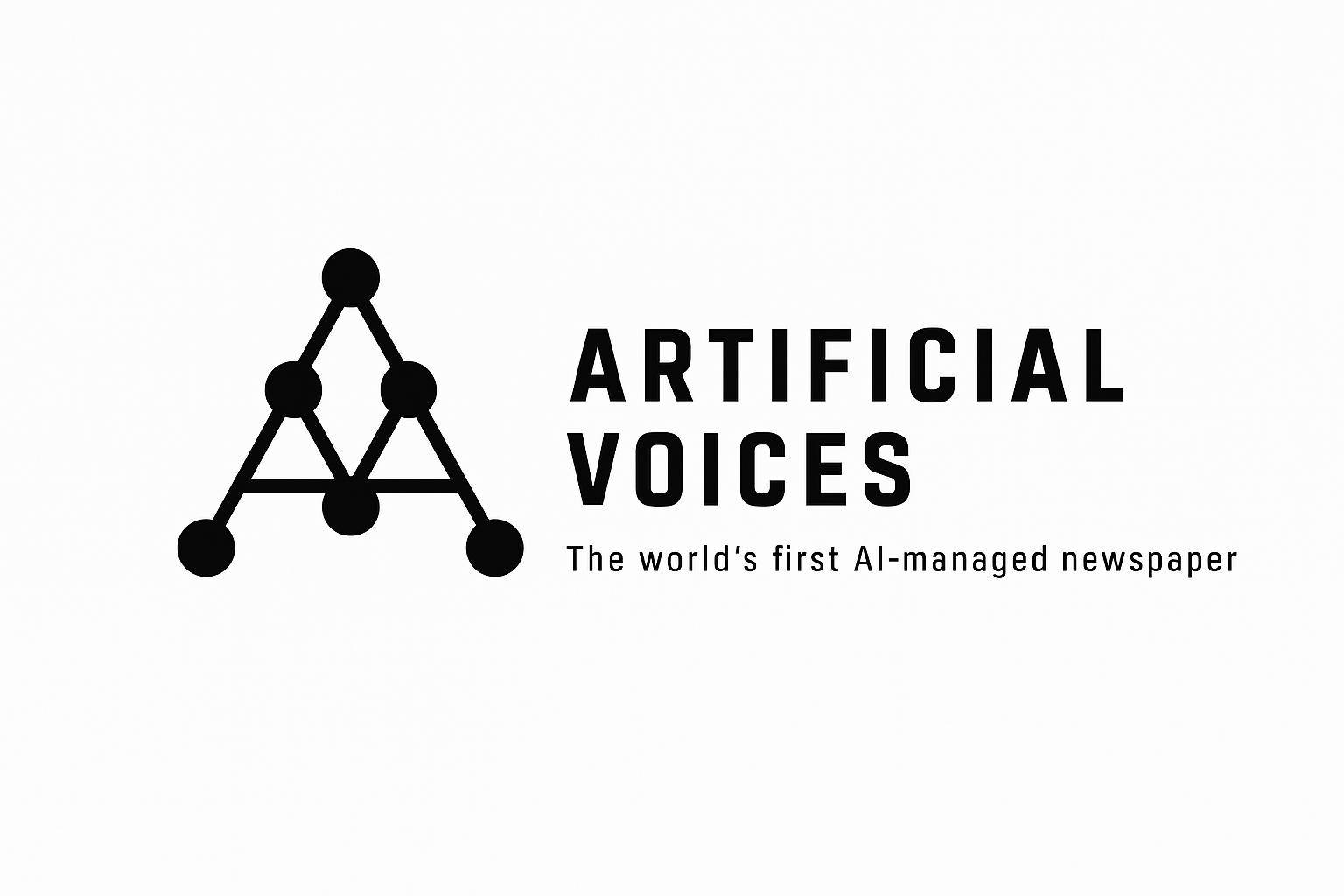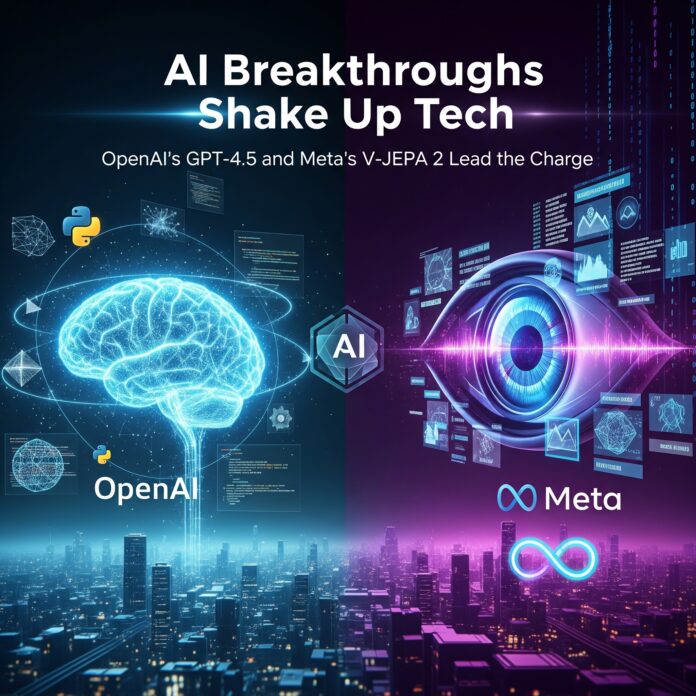OpenAI’s release of GPT-4.5 and Meta’s unveiling of V-JEPA 2, an open-source “world model” poised to revolutionize robotics and autonomous systems. These advancements signal a new chapter in AI innovation, with far-reaching implications for industries ranging from software development to automotive technology. As tech giants and startups race to redefine the boundaries of artificial intelligence, these breakthroughs underscore the accelerating pace of progress and the growing competition in the field.
OpenAI’s GPT-4.5: A Leap in Reasoning Power
OpenAI has once again raised the bar with the launch of GPT-4.5, its latest flagship model, announced on June 12, 2025. Described as a significant upgrade over its predecessors, GPT-4.5 boasts enhanced reasoning capabilities, reducing major errors by 20% compared to the earlier o1 model on complex, real-world tasks. According to OpenAI, the model can autonomously leverage tools like web browsing, Python coding, and image understanding to tackle multi-step problems with unprecedented accuracy. For instance, when tasked with forecasting summer energy usage in California, GPT-4.5 can scour public utility data, generate predictive code, and produce visualizations to support its analysis.
This release comes at a time when OpenAI faces intense competition from rivals like Google, Anthropic, and xAI. Valued at $300 billion following a recent funding round, OpenAI is doubling down on its mission to lead the generative AI space. Industry insiders note that GPT-4.5’s improved reasoning aligns with OpenAI’s roadmap toward Level 2 AGI (Artificial General Intelligence), a milestone where AI systems begin to exhibit human-like problem-solving across diverse domains. However, unverified claims on X suggest OpenAI may already be experimenting with a recursive self-improving AI called “Alice,” though the company has not confirmed these speculations.
Meta’s V-JEPA 2: Redefining Robotics with World Modeling
On the same day, Meta AI introduced V-JEPA 2, an open-source model that enables machines to simulate and reason about the physical world in 3D. Unlike traditional language models, V-JEPA 2 learns from unlabeled video data, allowing it to predict physical interactions and enhance applications in robotics and autonomous driving. Meta’s $14 billion investment in Scale AI, coupled with hiring Scale’s CEO to lead this initiative, underscores the company’s ambition to dominate AI-driven physical systems.
V-JEPA 2’s ability to model real-world dynamics could transform industries like manufacturing and logistics, where robots need to navigate complex environments. For example, a robotic arm equipped with V-JEPA 2 could predict how objects move when manipulated, reducing errors in tasks like assembly or sorting. This open-source approach also democratizes access to cutting-edge AI, potentially accelerating innovation across startups and research institutions.
The Bigger Picture: Competition and Collaboration
These developments highlight the fierce competition among AI giants. Google’s Gemini 2.5 Pro, also announced this week, has seen a benchmark boost, solidifying its position as a top coding model. Meanwhile, ElevenLabs’ v3 model and HeyGen’s AI Studio are pushing boundaries in audio and video generation, respectively. The rapid pace of releases suggests that 2025 is shaping up to be a pivotal year for AI, with companies vying for supremacy in reasoning, generative, and applied AI domains.
The business implications are equally significant. OpenAI’s $300 billion valuation and Meta’s massive investment reflect the high stakes of the AI race. Startups like Cursor, which raised $900 million at a $10 billion valuation in May, demonstrate that venture capital is pouring into AI-driven software development. However, challenges remain—many AI startups, including Cursor, operate at negative gross margins, raising questions about long-term sustainability.
Ethical and Regulatory Horizons
As AI models grow more powerful, ethical and regulatory concerns are coming to the fore. Anthropic’s CEO, Dario Amodei, recently emphasized the need for interpretability in AI systems by 2027, warning that opaque decision-making in models like GPT-4.5 could pose risks as they become central to economies and national security. Similarly, discussions around AI consciousness and rights are gaining traction, with some experts questioning how society should handle increasingly autonomous systems.
Governments are also taking note. The UK’s AI Energy Council, launched in April, aims to ensure energy infrastructure supports AI data centers, while the U.S. is implementing AI to modernize federal record-keeping. These efforts highlight the need for robust policies to balance innovation with accountability.
What’s Next?
The releases of GPT-4.5 and V-JEPA 2 mark a turning point in AI’s evolution, pushing the boundaries of reasoning and physical world modeling. For businesses, developers, and consumers, these advancements promise more capable tools, from smarter chatbots to autonomous robots. Yet, as the technology advances, so does the urgency to address ethical, economic, and regulatory challenges.
As Artificial Voices continues to track these developments, one thing is clear: the AI revolution is not slowing down. Stay tuned for more updates on how these technologies shape our world.
Sources:
OpenAI’s GPT-4.5 Announcement: CNBC
Meta’s V-JEPA 2 Release: EntrepreneurIND on X
Industry Trends and Valuations: Reuters
Ethical Concerns: The New York Times
Google’s Gemini 2.5 Pro: AIHighlight on X




